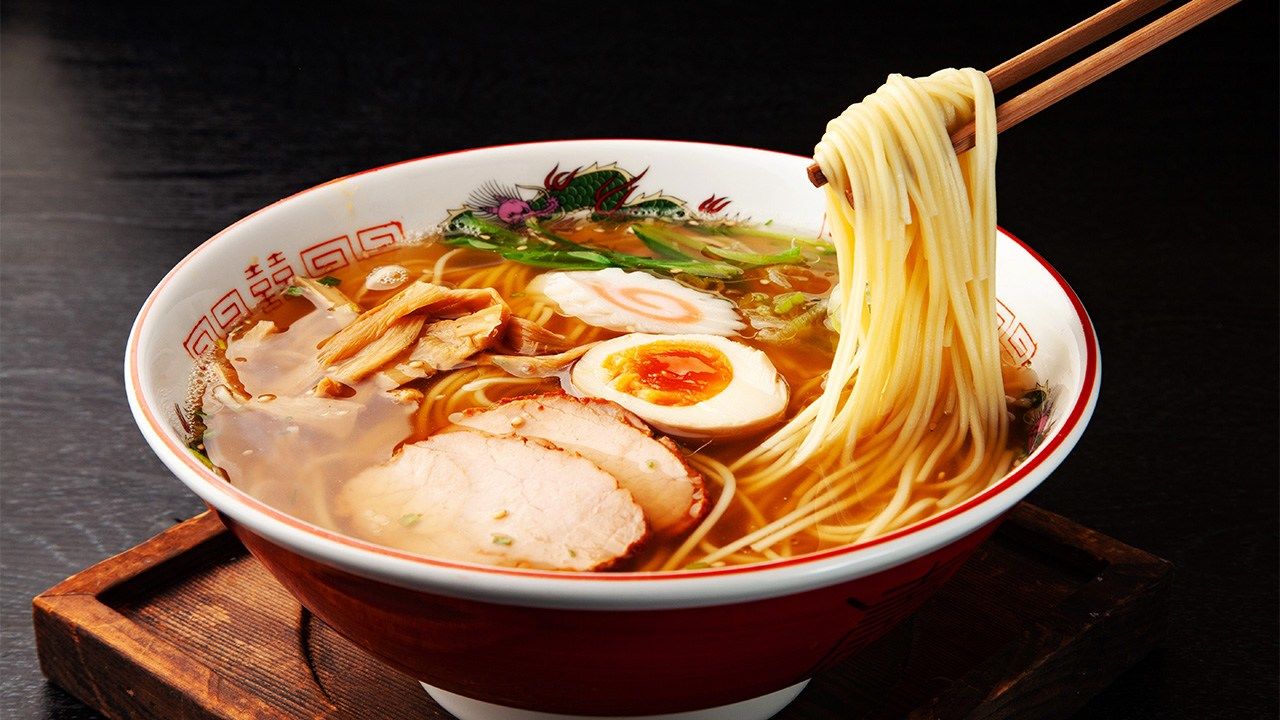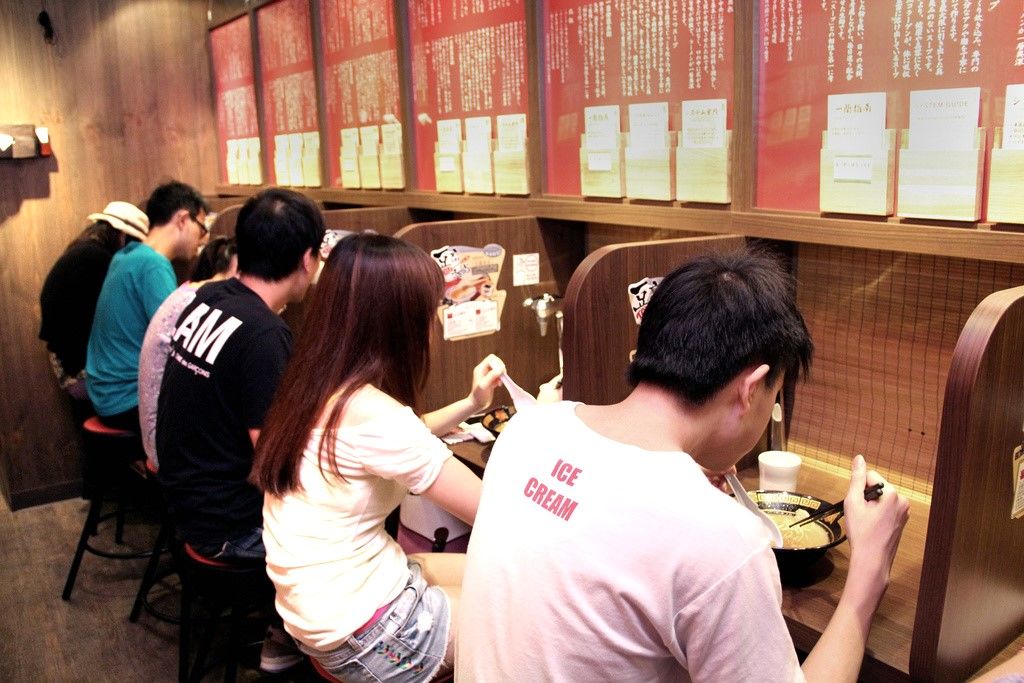
The Ever Evolving Culture of Ramen
Ramen’s Rise from Street Food to Global Phenomenon
Food and Drink- English
- 日本語
- 简体字
- 繁體字
- Français
- Español
- العربية
- Русский
Port-Town Origins
Opinions vary on the particulars of ramen’s origins, but the most accepted story is that it was born from wheat-noodle dishes brought by immigrants to Japan from China’s Fujian and Guangdong provinces in the early twentieth century.
Coming to be known as ramen, the dish spread in areas like Yokohama and the Hakata district of Fukuoka that had long histories as port towns. Also known as Chūka soba (“Chinese soba”), the dish was a mainstay at Chinese restaurants. Early varieties were simple in appearance and featured a relatively light soy-sauce based broth.

A bowl of ramen recreated from the menu of Asakusa Rairaiken, considered to be Japan’s oldest Ramen shop. In 2020, the Shin-Yokohama Ramen Museum headed a project to recreate the shop’s original flavor. (© Shin-Yokohama Ramen Museum)
In the early postwar years, stalls hawking bowls of ramen appeared in the numerous black markets that proliferated around the country. Proprietors of these yatai took to playing a woodwind instrument called a charumera to draw attention to their stalls. Customers charmed by the little melodies would gather night after night to enjoy the flavorful and nutritious dish, with ramen’s affordability helping it became a hit in a time of scarcity and want.

A stall selling Chūka soba in 1933. (© Kyōdō)
Ramen stalls spread nationwide and were key to the subsequent development of regional varieties.
In 1947, the stall Sankyū in Kurume inadvertently created tonkotsu broth after letting a batch of pork bone steep too long. The new flavor was a huge hit, and the white, creamy soup became a Kyūshū ramen standard.
Another stall in the Nagahama district of Fukuoka gained popularity with thin noodles that cooked quickly, a speedy feature that appealed to busy workers in the area. The shortened boiling time created an al dente-like barikata texture, and smaller servings encouraged patrons to order noodle refills (kaedama), bringing about a uniquely local style of tonkotsu ramen.

A bowl of ajitama tonkotsu ramen featuring flavored eggs from Hakata Daruma, founded in 1963 and now one of Fukuoka’s great ramen shops. (© D and H Inc.)
Stalls that popped up around tram stops in the capital city of Wakayama gave birth to the local soy-sauce and tonkotsu based ramen style. In Sapporo, the stall Aji no Sanpei took a hint from miso soup to develop what became the city’s miso ramen style. These and other local ramen varieties that have since become famous throughout Japan first emerged from humble stalls.

Miso ramen from popular shop Sumire in Hokkaidō. (© Yamakawa Daisuke)
The Ramen Boom Arrives
With the growth of television ownership starting in the 1970s, the public began learning about local ramen variations, fueling a boom in the noodle dish that lasted from the late 1980s into the 1990s. Shops lining streets in Tokyo and elsewhere vied for customers, raising the curtain on a period of intense competition that was described as a “ramen war.”
At the time, the Kōchi-style shop Tosakko Ramen in Tokyo’s Itabashi—said to have Japan’s biggest concentration of ramen shops—became a breakout hit with throngs of enthusiasts, sometimes over 1,000 in a single evening, visiting the restaurant, which remained open into the early morning hours. The sight of long lines of customers was picked up by the media, further fueling demand for local ramen styles.
As ramen established itself as a staple of Japanese food culture, attention shifted to the personalities behind Japan’s most sought-after flavors. There are a handful of truly legendary chefs who nurtured ramen culture, many of whom are now departed. These include the so-called god of ramen Yamagishi Kazuo, chef at the legendary shop Taishōken and inventor of tsukemen (dipping noodles), and Sano Minoru of Shina Sobaya, a stern figure who elevated the industry through his obsessive focus on ingredient and production standards.

Yamagishi Kazuo (left), founder of Taishōken. (© Marunaga Norenkai); Sano Minoru, founder of Shina Sobaya. (© Shin-Yokohama Ramen Museum)
In 2010, a wave of new artisan chefs appeared who incorporated techniques from other cuisines like French or Italian, creating new fusion bowls.
The key representative of that trend is Tokyo’s Chūka Soba Ginza Hachigo. The restaurant serves its ramen without the addition of tare sauce, which is considered an essential flavor element. Hachigo’s chef Matsumura Yasushi brought nearly 40 years of experience as a French chef and former head chef of Kyoto’s ANA Crown Plaza Hotel. He uses a duck and chicken base with Italian prosciutto for flavor. Chefs bringing such a level of technical skill and experience continue to drive ramen culture’s evolution.

The Chūka soba at Ginza Hachigo. (© Food Operation Japan)
Any discussion of ramen culture would be incomplete without mention of so-called ramen freaks. These hyper-fans are the first to find the latest piece of information or to try a new shop, sharing their findings on blogs and through social media. Their untiring efforts—and willingness to stand in long lines—helps bolster the industry as a whole.
Perhaps the greatest symbol of their contribution is Ramen Jirō. The once humble shop now has over 40 branches, mostly in Tokyo, and has become a cult favorite for allowing customers to adjust toppings and broth richness by calling out their preferences. It is also known for its unusual rules like forbidding talking and customers returning their own bowls, wiping their own tables, and thanking the chef.

The yasaikarame (extra vegetables and sauce) at Ramen Jirō. (© Yamakawa Daisuke)
Ramen was traditionally regarded as a casual, low-brow gourmet dish beloved by the masses. But its popularity has since spread beyond Japan to the rest of the world, making it a global icon of Japanese food culture.
In the Michelin Guide Tokyo 2016, Tokyo’s Japanese Soba Noodles Tsuta became the first ramen shop to earn a Michelin star—and the first shop listed in the guide to charge less than ¥1,000 per meal. There are now more than 60 shops in the guide, including those in the Bib Gourmand section. Ramen has come to rival sushi as a draw for overseas travelers, many of whom come just to enjoy an authentical bowl.

The shōyu soba at Japanese Soba Noodles Tsuta. (© Tsuta no Ne)
Ramen’s international popularity is based entirely on its diversity. Each matching of local ingredients and cooking methods with other traditional local cuisine has created many new flavors.
The variety of venues where hungry diners can enjoy ramen have also grown more diverse. The world’s first ramen amusement park, the Shin-Yokohama Ramen Museum, opened in 1994. That paved the way for the nationwide chain of Ramen Yokochō facilities that gather popular local ramen shops from around Japan under one roof. Then there are the numerous ramen festivals that feature stalls from specially chosen local ramen shops, events that are now among Japan’s most popular food festivals and draw hordes of ramen fans wanting to try limited edition dishes not available anywhere else.

The interior of the Shin-Yokohama Ramen Museum recreates a street scene of 1950s Japan dotted with popular ramen shops. (© Jiji)

The Tokyo Ramen Fest in Tokyo’s Komazawa Park attracts droves of ramen fans. (© Ramen Databank)

The interior of the Hong Kong branch of ramen shop Ichiran, one of eight international locations for the popular Japanese chain. (© Kyōdō)
Another leading name in ramen is the popular chain Ichiran. Shops have dividers between counter seats to create an atmosphere where solo diners can focus on flavor, a style it has copied at its overseas branches.
The versatility of ramen has allowed chefs to bend the rules, opening the dish to a diversity of styles and arrangements. This freedom of expression is one of ramen’s greatest appeals and why it is capturing the hearts of noodle lovers worldwide.
(Originally published in Japanese. Banner photo: A simple bowl shōyu ramen. © Pixta.)